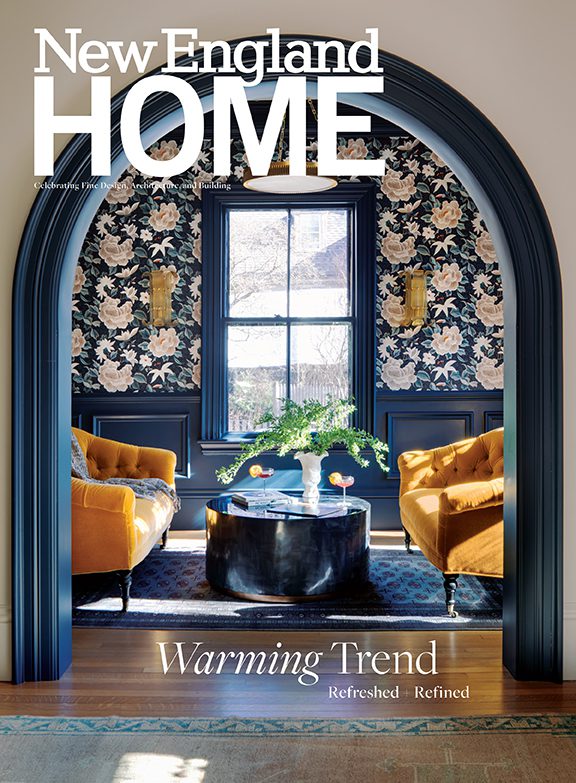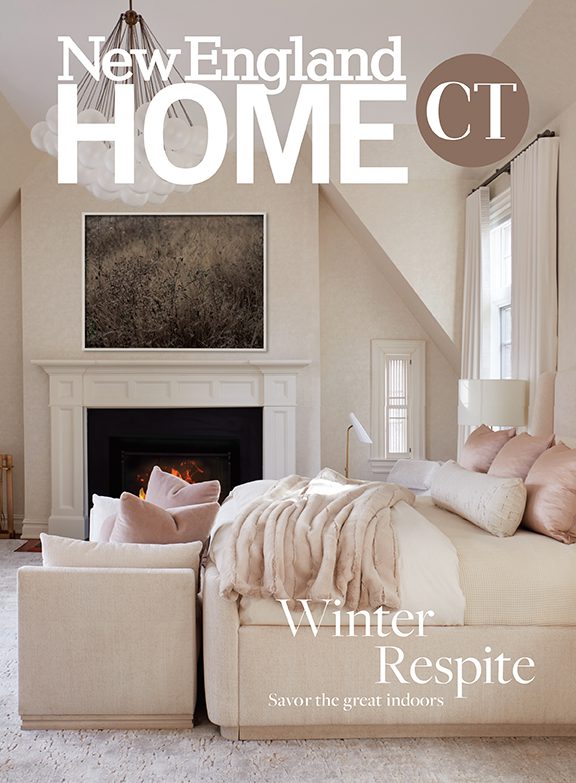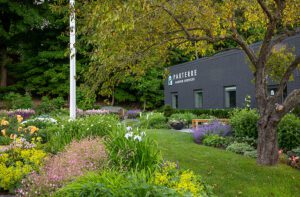Cottage Industry
March 8, 2013
An existing structure with a thoughtful layout provides inspiration for the new house that forms a family’s perfect summer getaway.
Text by Maria LaPiana Photography by Aaron Usher
You won’t find this exact axiom in J. Michael Abbott’s mission statement, but when the architect was hired to design a cottage-style summer home in Middletown, Rhode Island, he held fast to the belief that “if it ain’t broke, don’t fix it.” This is not surprising, given that Abbott, a principal at Newport Collaborative Architects when he worked on this project, has had an abiding interest in historic preservation and adaptive reuse for most of his thirty years in the field.
Since Abbott, now a partner in Northeast Collaborative Architects, had already successfully worked on a traditional home in Providence for his clients, Elizabeth and Charles Fradin, they had every confidence he would help them with the casual getaway they wanted. “Our house in Providence, a brick Georgian built in 1920, is very stately and formal,” says Elizabeth. “Michael designed several additions and they melded beautifully. We knew we wanted to work with him again.”
Having judged the existing cottage’s style and footprint ideal, Abbott planned to renovate, remodel and expand on what was already there. The former owner had added onto the structure over time, creating a surprisingly orderly floor plan: a cruciform. When the renovations the homeowners had in mind proved too extensive, however, they decided to build new, using the old cottage as inspiration. “We built up and made it a two-story house, but we didn’t want to lose the almost rambling feeling of the cottage,” says Abbott. The new house follows the old house’s footprint, mimicking the first-floor layout.
Large glazed windows throughout invite natural light and ventilation. Floors are a combination of hardwood and polished concrete with radiant heat. The kitchen sits at the intersection (known in ecclesiastical architecture as “the crossing”) of the two rectangles that create the cruciform. “The kitchen is meant to be like a hallway,” Abbott explains. “It’s how you get to the breakfast room, and to the other side of the house.”
Colorful wood stains were used on birch veneers, so the tight and flush kitchen cabinets take on striking red, brown and orange hues above and below the countertops of quartz.
The Fradins, who have two children, use every inch of the house when they stay there. “I’d be hard-pressed to choose a favorite room. I love them all,” says Elizabeth. She will allow that she’s especially fond of the light-filled breakfast room that faces west. “It’s almost a glass cube. It’s a room I can be in at any time of the year, in any weather,” she says. “The house has so many terrific sightlines, so many windows that connect it to the landscape so beautifully.”
Indeed, the exterior was thoughtfully designed by Abbott, along with landscape architect Martha S. Moore of Tiverton, Rhode Island. The home sits on an acre, a bit kitty-cornered to the street, two of its wings sheltering the entry and a small garden. “It immediately orients you to views over the vineyard next door, to the stone walls that define the property,” says the architect.
Clad in shingles, the house is a little “Shakerish,” says Abbott, but with a twist. Tall windows in the facade can be shuttered by expansive barn-like doors—the smaller one yellow, the larger chartreuse—for privacy and protection from the elements.
The rear is all about casual living and easy access to the yard. Wide doors at grade open to the lawn on one side, the pool area on another. On the second floor, all of the bedrooms open onto a light and airy mahogany-and-metal balcony with a curvaceous spiral stair at one corner. Cable railings and flooring made of industrial steel grates provide a sense of transparency.
Recycled materials were used throughout the home, and solar panels provide nearly half of the home’s power, says Abbott, who also installed LED lighting and a tankless hot water heater. And in a touch both whimsical and “green,” the pool house roof is planted with mosses and sedums. In keeping with the rest of the house and its surroundings, the slanted mini-garden surprises while it soaks up the summer sun.
Share
![NEH-Logo_Black[1] NEH-Logo_Black[1]](https://b2915716.smushcdn.com/2915716/wp-content/uploads/2022/08/NEH-Logo_Black1-300x162.jpg?lossy=1&strip=1&webp=1)













You must be logged in to post a comment.